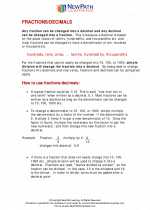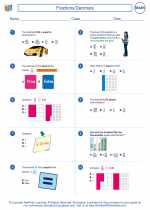Decimal Numbers
A decimal number is a number that contains a decimal point. The decimal point separates the whole number part from the fractional part. The digits to the right of the decimal point represent parts of a whole, such as tenths, hundredths, thousandths, and so on.
Understanding Decimal Places
Each digit in a decimal number has a place value based on its position relative to the decimal point. The place values of decimal digits are powers of 10. For example:
- The digit immediately to the right of the decimal point represents tenths
- The next digit to the right represents hundredths
- The digit to the right of that represents thousandths
- And so on
Converting Decimals to Fractions
Decimals can be converted to fractions. To convert a decimal to a fraction, the digits to the right of the decimal point become the numerator of the fraction, and the place value of the rightmost digit becomes the denominator. For example:
0.75 can be written as 75/100, which simplifies to 3/4
Operations with Decimal Numbers
Decimal numbers can be added, subtracted, multiplied, and divided just like whole numbers. When performing operations with decimals, it's important to line up the decimal points and then proceed with the operation as usual.
Rounding Decimals
Rounding decimals involves determining which place value to round to and then adjusting the digit to the right of that place value. For example, to round 3.789 to the nearest hundredth, you would look at the digit in the thousandths place (8) and round accordingly.
Study Guide
Here are some key points to remember when working with decimal numbers:
- Understand the place value of each digit in a decimal number
- Be able to convert decimals to fractions and vice versa
- Know how to perform operations with decimal numbers
- Practice rounding decimals to a specified place value
Remember to line up the decimal points when performing operations with decimals, and pay attention to the place value when rounding.
With this understanding, you'll be well-equipped to work with decimal numbers in various mathematical contexts.
.◂Math Worksheets and Study Guides Sixth Grade. Fractions/Decimals

 Worksheet/Answer key
Worksheet/Answer key
 Worksheet/Answer key
Worksheet/Answer key
 Worksheet/Answer key
Worksheet/Answer key
